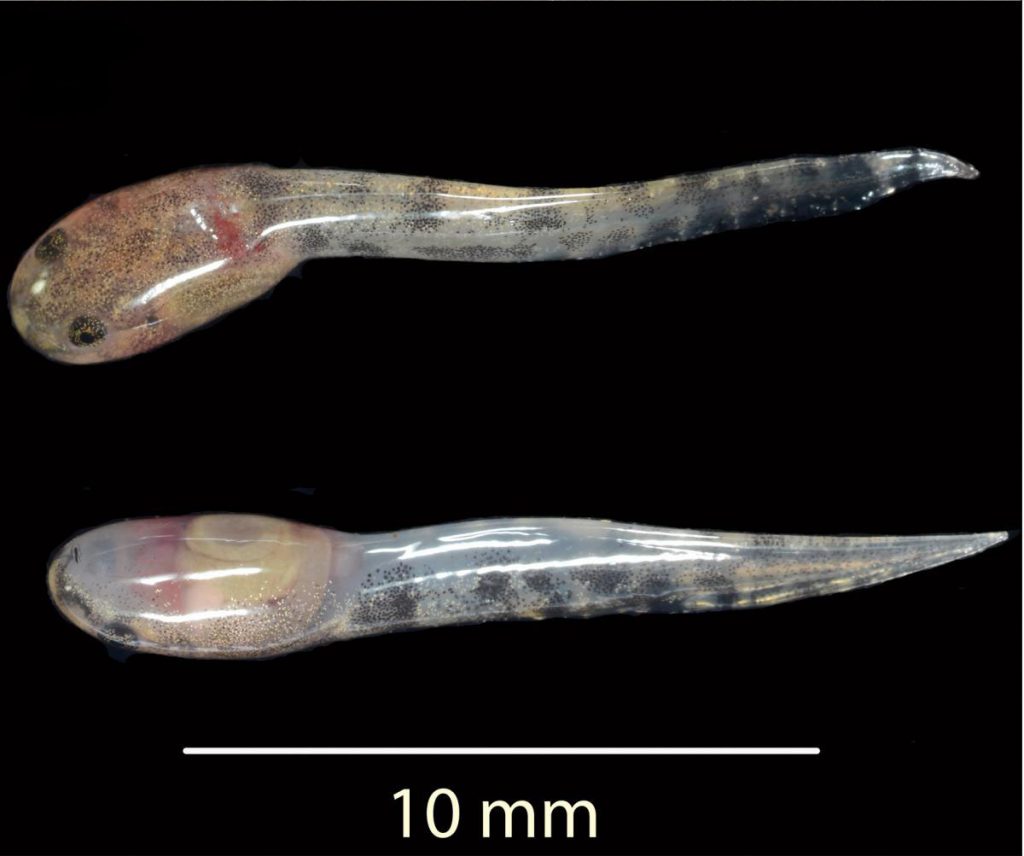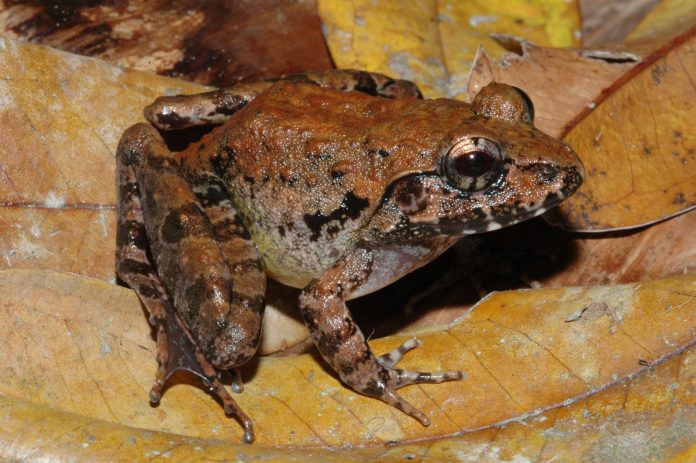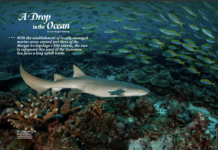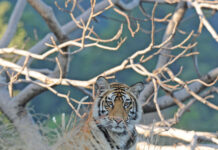The discovery of the tadpole-laying frog
Text Djoko T. Iskandar
During an expedition in 1989, a small, common-looking frog with a body length of about 40 milli-metres was secured at Bogani Nani Wartabone (formerly Dumoga Bone) National Park, Sulawesi, Indonesia, and preserved. While the individual was ordinary in form, what attracted my attention was the presence of two colourless tailed tadpoles found with the preserved frog. Upon dissection, it was confirmed that there were 33 tadpoles in the specimen’s left oviduct and more importantly, they were eggs without the usual jelly coat.
This was an unusual phenomenon: for most frogs, fertilisation occurs externally; as the female releases her eggs, the male covers them with sperm. Knowing this, we examined similar-looking specimens and found another example from north Central Sulawesi with 50 strongly pigmented tadpoles in an advanced stage (Gosner 36) with no yolk remaining in the intestine. This finding prompted Dr R. Inger from the Field Museum of Natural History, Chicago, USA, to fly to Bandung in West Java province and confirm my findings in 1990.
The task became more complicated as I found several similar-looking frogs of the genus Limnonectes from all over Sulawesi with only very subtle differences compared to the tadpole-laying species. This genus has a specific character that eventually led to them being known as “fanged frogs”. Usually, the male develops a pair of fang-like protrusions at the lower jaw, but in this particular species, adult females also bear these protrusions – though smaller compared to adult males.

In the following intervening years, we visited Sulawesi on about a dozen expeditions, over the course of many months, to study the island’s biology and evolution, but could not firmly establish the range of the species. Instead, we discovered even more unknown species, ranging from tiny to giant forms, and various unique reproductive strategies unlike the tadpole-laying species. Several were found to lay eggs on land and even on the leaves of shrubs, while others laid eggs at the border of water bodies. Parental care was observed in at least three forms.
At this point, we changed our approach and decided to study the genetics of this interesting group. With the help of several colleagues and institutions, we were able to carry out genetic analyses of nearly all forms from all over Indonesia. Four important genetic papers resulted, and we finally established the approximate distribution of the species, as well
as its relationships with similar-looking species.
For our December 2014 research paper characterising the novel tadpole-laying species, we studied more than 100 specimens from around Sulawesi, ultimately collecting 19 females carrying tadpoles and witnessing egg clutches extracted from three pregnant females, which developed into tadpoles. A truly unique species of frog, which we designated Limnonectes larvaepartus, had finally been described.
For more stunning stories and photographs from this issue, check out Asian Geographic Issue 110.











